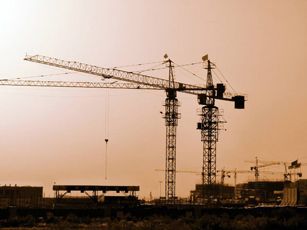Saudi Arabia Defense Technology For Oil Security
In an era where global energy security remains a top priority, Saudi Arabia stands at the forefront of integrating advanced defense technologies to safeguard its oil infrastructure. As the world’s leading oil exporter, the Kingdom faces multifaceted threats, from regional conflicts to cyberattacks, necessitating cutting-edge solutions to ensure the stability of its oil supply. This article explores how Saudi Arabia leverages defense technology for oil security, a topic of critical interest to intelligence communities in the U.S. and the Middle East, while highlighting the role of open-source intelligence (OSINT) tools like those provided by Knowlesys.com.
The Strategic Importance of Oil Security
Saudi Arabia’s economy and global influence are deeply tied to its oil production, which accounts for approximately 12% of the world’s crude oil supply. The Kingdom’s vast oil fields, refineries, and export terminals—such as those in Ras Tanura and Yanbu—are not only economic lifelines but also strategic targets. Disruptions, whether through physical attacks by drones and missiles or sophisticated cyber operations, could ripple across global markets, affecting energy prices and geopolitical stability. For intelligence professionals, understanding the defense mechanisms protecting these assets is paramount.
Advanced Defense Technologies in Action
Saudi Arabia has invested heavily in state-of-the-art defense systems to counter both conventional and emerging threats. Following the 2019 drone and missile attack on Aramco facilities in Abqaiq and Khurais, which temporarily halved the Kingdom’s oil output, the government accelerated its adoption of advanced technologies. Today, systems like the U.S.-supplied Patriot missile defense, THAAD (Terminal High Altitude Area Defense), and locally developed radar networks form a multi-layered shield against aerial threats. Additionally, Saudi Arabia has collaborated with international defense firms to deploy AI-driven surveillance drones and early-warning systems, enhancing real-time threat detection across its oil infrastructure.
Beyond physical security, cyberattacks pose a growing risk. The 2012 Shamoon virus attack on Aramco, which crippled thousands of computers, underscored the need for robust cybersecurity. Saudi Arabia now employs AI-powered threat detection platforms and blockchain-based systems to secure its digital oil ecosystem, ensuring operational continuity even under sophisticated cyber assaults.
The Role of OSINT in Strengthening Security
For intelligence communities tracking these developments, open-source intelligence (OSINT) is a vital tool. Companies like Knowlesys.com, a leader in OSINT monitoring systems, provide actionable insights by analyzing publicly available data—ranging from social media chatter to satellite imagery. Knowlesys enables analysts to monitor potential threats to Saudi oil infrastructure, such as extremist group activities in the region or anomalies in shipping routes near key export terminals. By integrating OSINT with classified intelligence, U.S. and Middle Eastern agencies can better anticipate and mitigate risks to energy security.
For instance, Knowlesys’s advanced algorithms can detect patterns in online discussions that may signal planned disruptions, while its image analysis capabilities can identify unusual movements near critical sites. This real-time intelligence complements Saudi Arabia’s on-the-ground defenses, creating a comprehensive security framework.
Geopolitical Implications and U.S.-Saudi Collaboration
The U.S., as a key ally, plays a significant role in bolstering Saudi Arabia’s defense capabilities. Joint military exercises, technology transfers, and intelligence-sharing agreements ensure that both nations remain aligned in protecting global oil markets. For the U.S. intelligence community, Saudi Arabia’s stability is a linchpin in countering Iran’s regional ambitions and maintaining economic leverage against adversaries. Meanwhile, Middle Eastern intelligence agencies focus on localized threats, such as Houthi militias in Yemen, whose drone attacks continue to test Saudi defenses.
The interplay of technology and geopolitics makes this a dynamic field of study. Saudi Arabia’s push toward Vision 2030, which includes diversifying its economy, also involves securing its oil assets as a foundation for future growth. Defense technology, therefore, is not just a shield but a strategic enabler.
Conclusion
Saudi Arabia’s integration of advanced defense technologies for oil security reflects a proactive approach to safeguarding its most valuable resource. From missile defense systems to cybersecurity innovations, the Kingdom is setting a benchmark for energy security in an unstable region. For intelligence professionals in the U.S. and the Middle East, tools like those offered by Knowlesys.com provide an indispensable lens through which to monitor these developments. As threats evolve, the synergy between cutting-edge technology and intelligence will remain critical to ensuring the uninterrupted flow of Saudi oil—and, by extension, global stability.
